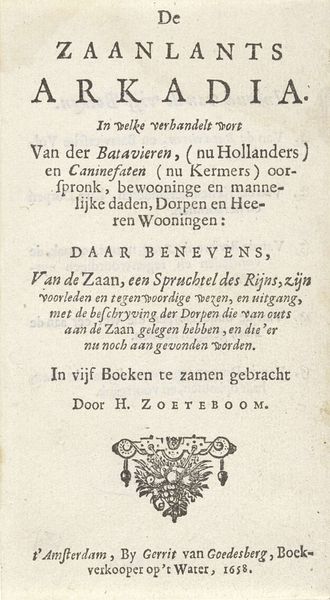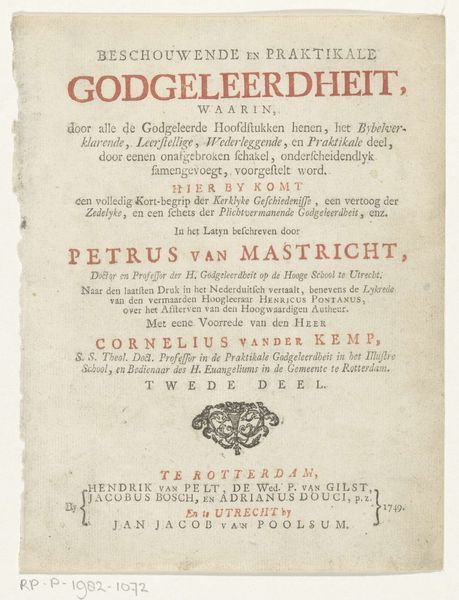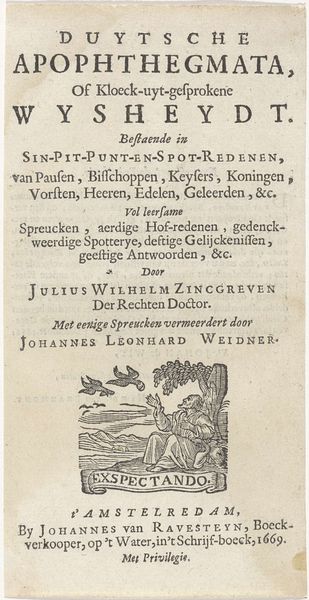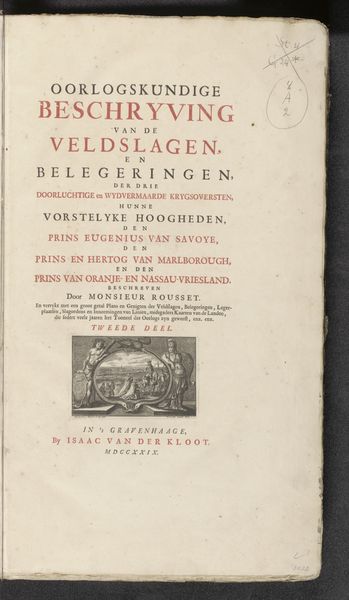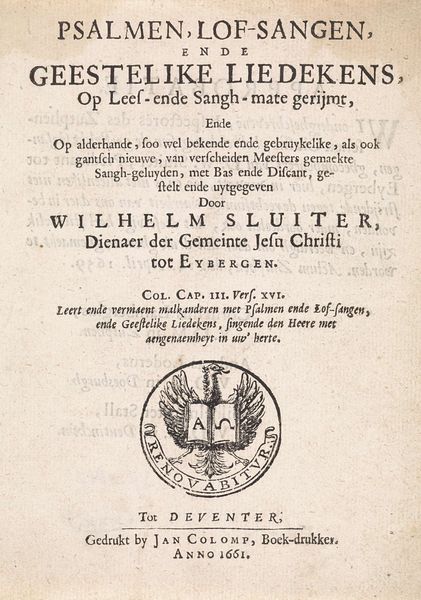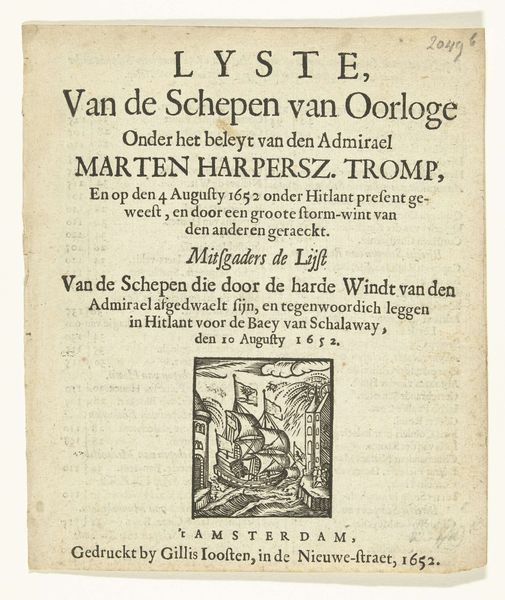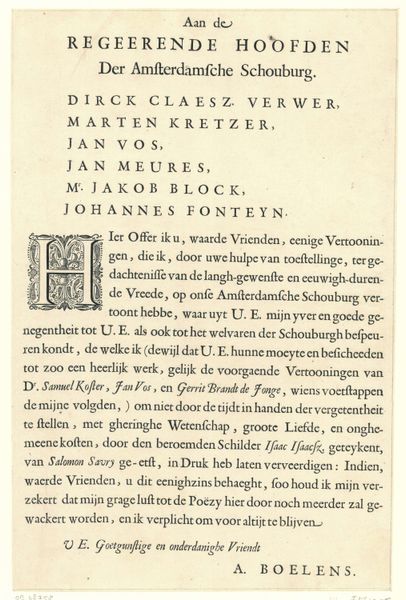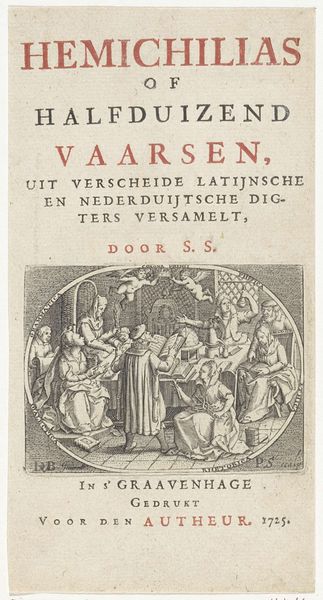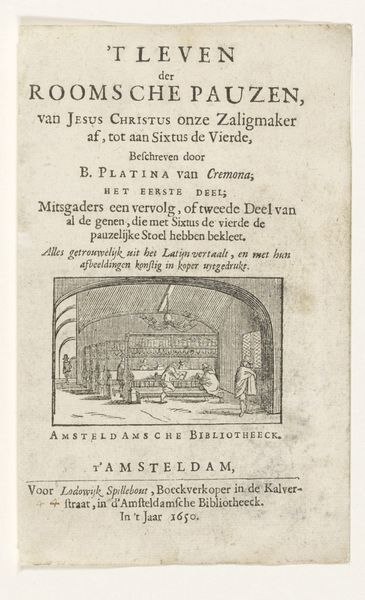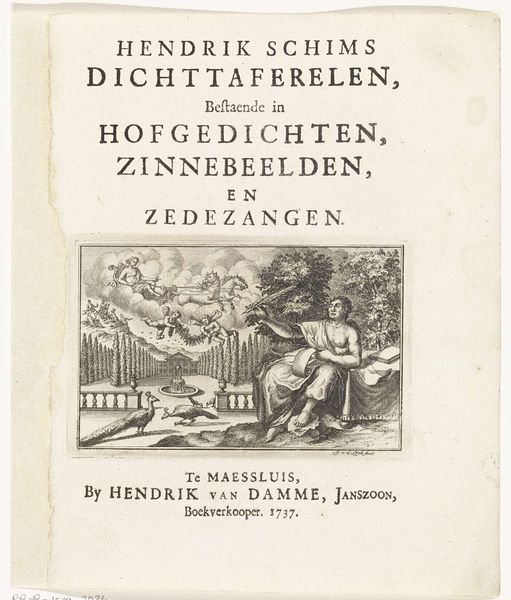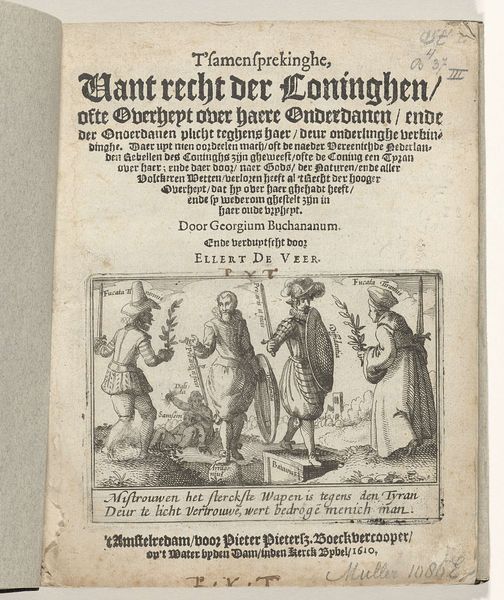
Twee putti dragen het wapen van aartshertog Leopold Willem van Oostenrijk 1660
0:00
0:00
print, textile, engraving
#
allegory
#
baroque
# print
#
textile
#
engraving
Dimensions: height 125 mm, width 184 mm
Copyright: Rijks Museum: Open Domain
This print, made around 1660 by Coenraet Waumans, features two putti holding the coat-of-arms of Archduke Leopold Wilhelm of Austria. The putti, derived from classical antiquity as symbols of divine love and protectors, flank the heraldic shield, which is topped with a crown. These cherubic figures, often seen in Renaissance and Baroque art, are not merely decorative. Their presence is a conscious revival, echoing ancient Roman depictions of Cupid and Psyche. This motif appears in many forms throughout history, adorning tombs, paintings, and even domestic items. Consider how the innocent sensuality of these figures has been employed to evoke both sacred and profane love. The putto has roots in the ancient world, becomes Christianised, then secular. The motif is reborn over and over again, reflecting our subconscious desires and fears. Such recurring symbolism highlights the enduring power of images to evoke emotional responses, proving their capacity to connect us to past worlds.
Comments
No comments
Be the first to comment and join the conversation on the ultimate creative platform.

